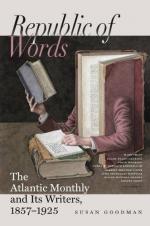[13] Montgeron, Tom. III. p. 10.
[14] See, for the entire relation, from which I have here given extracts only, Montgeron’s work, Tom. III. pp. 24-26. Montgeron, though he vouches for the narrator as a gentleman worthy of all credit, does not give his name, nor that, of the physician, except as Dr. M——. The occurrence took place in 1732.
[15] Montgeron, Tom. III. pp. 107-111.
[16] Ibid. p. 688.
[17] “As murderous blows must either wound or kill, but for a miracle, there ought to be a promise or a revelation to warrant their infliction. But God has given no such promise, no such revelation, to justify the demanding or the granting of the succors. It is, therefore, a tempting of God to do so.”—Vains Efforts des Discernans, p. 133.
[18] Chenet is the French expression, an andiron, or dog-iron, as it is sometimes called. Montgeron thus describes it: “The andiron in question was a thick, roughly shaped bar of iron, bent at both ends, but the front end divided in two, to serve for feet, and furnished with a thick, short knob. This andiron weighed between twenty-nine and thirty pounds.”—Montgeron, Tom. III. p. 693.
[19] Vains Efforts des Discernans, p. 134.
[20] Memoire Theologique, p. 41. This is admitted also by the Abbe, see Vains Efforts, p. 127, and by M. Poncet, Reponse, etc., p. 15.
[21] Montgeron, Tom. III. pp. 693, 694. The author takes great pains to disprove a theory which few persons, in our day, will think worth refuting. In this connection, he quotes from a memoir drawn up by a gentleman who had spent much time in examining these phenomena, as follows:—“The force of the action and movement of the instruments employed is not broken or arrested or turned aside. Experience conclusively proves this. One sees the bodies of the convulsionists bend and sink beneath the blows. One can perceive that the parts assailed are twisted, and receive all the movements which such weapons as those employed are calculated to communicate. And the violence of the blows is often such that not only are they heard from the lowest story of a house to the highest, but they actually communicate to the floor and to the walls of the apartment a shock, which is sensibly felt, and which causes the spectators to start.”—p. 686.
Montgeron adds his own personal experience. He says,—“That has happened frequently to myself. I have often been so much impressed with the strong motion communicated to the floor by the terrible blows dealt with stones or billets of wood with which they were striking convulsionists, that I could not restrain a shudder. For the rest, this is an occurrence to the truth of which there are as many to testify as there have been persons, whether friends or foes, who have seen the ‘great succors.’ One may say, that it is a fact attested by witnesses innumerable.”—Montgeron, Tom. III. p 686.




